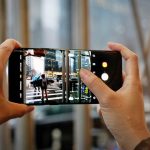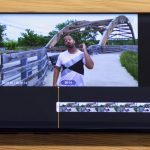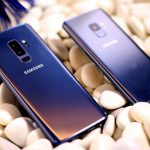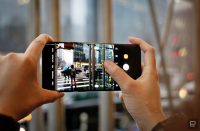MIT Media Lab famous person unearths His First project With Samsung
Jinha Lee gave us probably the most world’s most enjoyable interfaces. Then he disappeared.
January 7, 2016
In 2013, Jinha Lee used to be probably the most greatest names in experimental person interface. At MIT’s Tangible Media group, he created a magnetically levitating show that allowed you to rearrange objects in midair and a reveal that it is advisable reach your hands into, letting you contact knowledge itself.

Then two years ago, at the height of media consideration, he lower back to Korea to serve necessary military service. After a month of bootcamp, he deferred to another possibility: He joined Samsung.
There, he was a major researcher and head of the interplay workforce working on new show applied sciences. His first mission is referred to as MediaSquare.
MediaSquare is a mid-stage idea to turn the sequestered media residing on our telephones right into a communal expertise on a shared monitor. Watch the video above, and you’ll see individuals flick thumbnails of images, videos, and even eating places on their phones, after which these chunks of media waft to the television. customers can level their Samsung Galaxy phones to make a choice content material (that magic is thanks to the cellphone’s accelerometer), or twist the dial on their Samsung watches to crank up the amount of the tune. each piece of media can also be hearted, very similar to a social network playing out in a single room.
The specifics are nonetheless within the works—it’s conceivable, for instance, that Samsung may beef up iOS gadgets when this comes to market—however the imaginative and prescient is obvious: Lee desires all of the discrete gadgets around you to combine on a whim, to turn our four-inch remoted worlds into shared social experiences.
“There was this moment once I was having a espresso chat with my household, and all through the conversation, my mom mentioned she considered something and want to show it to us, then picked up her cellphone, spent a while discovering one thing on her cellphone, and sent it to rest of us by means of mobile messenger!” Lee writes by means of e mail. “This was after I realized one thing was essentially going flawed here.”
The anecdote gets to the heart of the up to date day paradox at play: Our social lives exist on telephones, so when we try to socialize in individual, we end up consulting our photo reels, facebook, and MMS. It’s in fact more difficult to share these items with someone in the same room than it is from a completely completely different state.
Lee isn’t the one interface guru tackling this problem. Mark Kawano, the top of Storehouse, released an AppleTV app known as PhotoRemote that beams photos, movies, and extra from the phone to the tv so that you would be able to revel in content material collectively. but whereas Kawano has eager about one thing practical (and shippable), Lee pushes the realm of plausibility to its conceptual max. for instance, how do you bring to a person that his Samsung watch can flip up the volume at a birthday party? In true researcher style, Lee is building the interaction first, answering that query later. And in building that interplay, Samsung is in reality architecting its apps in a new method: To function for single users (as most apps are designed) and to transform for a multi-person interface (a feat which only a few apps juggle).

“What we’ve got tested so far is only some reference examples of imaginable interactions that could arise in the house,” Lee writes. “the larger concept is that multi-instrument interaction could take more than one varieties. In such multi-instrument paradigm, it is going to be much more difficult to keep the interaction easy as within the cellular-paradigm.”
Which is why it gets extraordinarily troublesome to critique MediaSquare because it exists lately. The video we see here is, in essence, a superbly produced proof of idea. MediaSquare doesn’t have a ship date, and each time it hits, it may look a lot totally different than it does now. however Lee is extra interested in the higher design problem—of sharing knowledge in area and sharing interface in space—than this particular approach to it.
“i am hoping folks really feel related with every different in a extra non-public and intimate means, and that their communication does not get too much interrupted by mobile software while together,” Lee writes. “The purpose is to make people spend extra time with pals than fb chums and savour ‘local community’ more than ‘social network.'”
(13)













